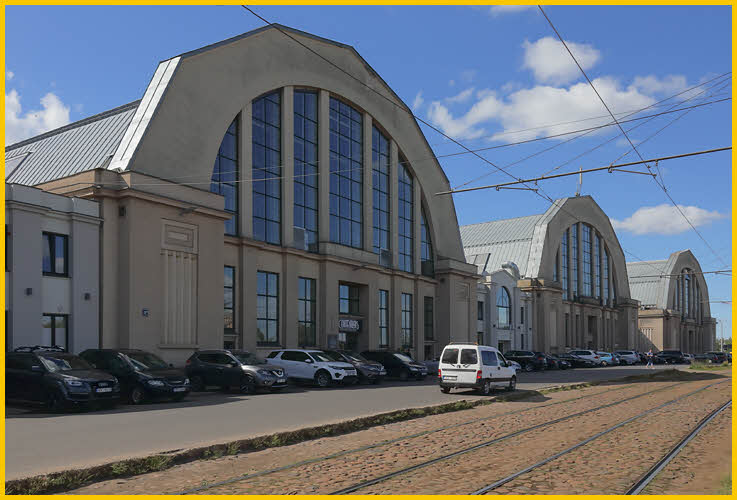Latvia
Central Market Buildings
 |
When the Riga Central Market was first unveiled in 1930 it was the largest and most technologically advanced market in Europe. Equipped with modern refrigeration units, cargo lifts and underground passageways and warehouses, the five pavilions were an engineering marvel that quickly became an attraction for foreign visitors and Riga’s residents alike.
A market had existed a short distance away near the river since the 16th century, but conditions were considered too unsanitary for a 20th-century Latvia that had recently risen from the ashes of WWI. This temple of modernity and commerce represented what Riga could achieve as the capital of a new and independent state. And unlike the old market where only servants and farmers mingled, the new market attracted wealthy citizens who no longer had to contend with the raucous atmosphere of the old Daugavmalas market. It became acceptable, even trendy, to visit such a modern and civilised market and government ministers and captains of industry were often spotted strolling about its pavilions.
But the market nearly remained a lofty project on the drawing board of history. The idea of creating a new market was discussed as early as 1910, but WWI put all plans for progress on hold. When the project was finally approved in 1922, the new nation of Latvia faced dire economic times and although work began in earnest in 1924 only two years later construction ground to a halt due to political intrigue and a lack of funds. Thankfully, the builders and masons returned to work again in 1928 finishing the massive endeavour in 1930. Money was saved by using the enormous metal zeppelin hangars left by the German army after the war in the town of Vaiņode. The metal hangars were in fact so large that only the top portions were used as a skeleton for the market pavilions. The market's pavilions are five of nine Zeppelin hangars remaining in the world.
